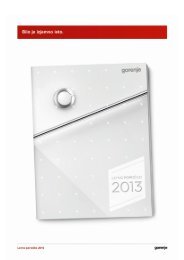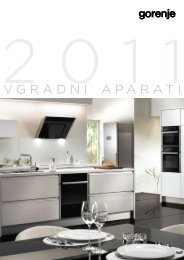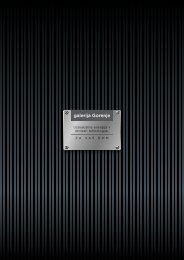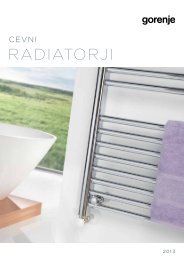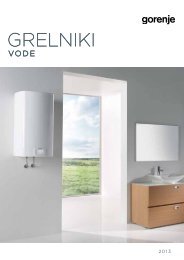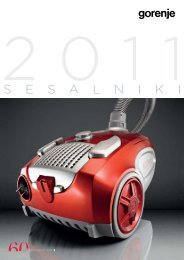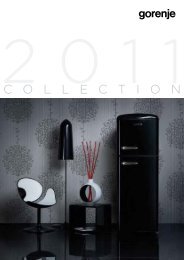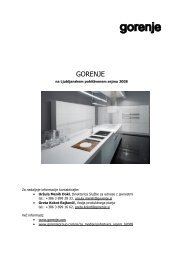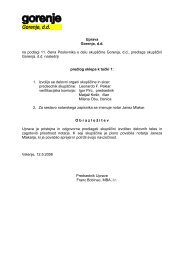ANNUAL REPORT 2008 - Gorenje Group
ANNUAL REPORT 2008 - Gorenje Group
ANNUAL REPORT 2008 - Gorenje Group
Create successful ePaper yourself
Turn your PDF publications into a flip-book with our unique Google optimized e-Paper software.
89<br />
Acquisitions on or after the date of transition to IFRS<br />
For acquisitions on or after 1 January 2006, goodwill represents the excess of the cost of the acquisition<br />
over the <strong>Group</strong>’s interest in the net fair value of the identifiable assets, liabilities and contingent<br />
liabilities of the acquire. When the excess is negative (negative goodwill), it is recognised immediately<br />
in profit or loss.<br />
Acquisition of minority interests<br />
Goodwill arising on the acquisition of a minority interest in a subsidiary represents the excess of the<br />
cost of the additional investment over the carrying amount of the net assets acquired at the date of<br />
exchange. It is recognised in equity.<br />
Subsequent measurement<br />
Goodwill is measured at cost less accumulated impairment losses.<br />
(ii) Research and development<br />
Expenditure on research activities, undertaken with the prospect of gaining new scientific or technical<br />
knowledge and understanding, is recognised in profit or loss when incurred.<br />
Development activities involve a plan or design for the production of new or substantially improved<br />
products and processes. Development expenditure is capitalised only if development costs can be<br />
measured reliably, the product or process is technically and commercially feasible, future economic<br />
benefits are probable, and the <strong>Group</strong> intends to and has sufficient resources to complete development<br />
and to use or sell the asset. The expenditure capitalised includes the cost of materials, direct<br />
labour and overhead costs that are directly attributable to preparing the asset for its intended use.<br />
Borrowing costs related to the development of qualifying assets are recognised in profit or loss as<br />
incurred. Other development expenditure is recognised in profit or loss as incurred.<br />
Capitalised development expenditure is measured at cost less accumulated amortisation and accumulated<br />
impairment losses.<br />
(iii) Other intangible assets<br />
Intangible asset with indefinite useful life (trade marks) are tested for impairment once a year. Other<br />
intangible assets that are acquired by the <strong>Group</strong>, which have finite useful lives, are measured at<br />
cost less accumulated amortisation and accumulated impairment losses.<br />
(iv) Subsequent expenditure<br />
Subsequent expenditure is capitalised only when it increases the future economic benefits embodied<br />
in the specific asset to which it relates. All other expenditure, including expenditure on internally<br />
generated goodwill and brands, is recognised in profit or loss as incurred.<br />
(v) Amortisation<br />
Amortisation is recognised in profit or loss on a straight-line basis over the estimated useful lives of<br />
intangible assets, other than goodwill, from the date that they are available for use. The estimated<br />
useful lives for the current and comparative periods are as follows:<br />
patents and trademarks<br />
capitalised development costs<br />
5 - 10 years<br />
5 - 10 years<br />
(f) Investment property<br />
Investment property is property held either to earn rental income or for capital appreciation or for<br />
both, but not for sale in the ordinary course of business, use in the production or supply of goods



